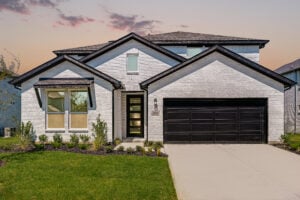Here’s something that might surprise you: Vertical videos yield a 130% higher engagement rate than horizontal ones.
That’s no small difference. This statistic alone suggests a shift in how we should be approaching real estate marketing, but is vertical video truly the future? With platforms like Instagram Reels, TikTok, and YouTube Shorts prioritizing vertical content, it’s hard to ignore the growing trend.
As mobile use continues to rise — when’s the last time you knew someone who didn’t have a smartphone? — vertical video feels like a natural fit for today’s viewing habits. Buyers aren’t turning their phones sideways anymore. Research suggests that less than 30% of users will turn their phones sideways – and those who do only watch 14% of the video on average.
@homejabWelcome to 500 Walnut Street Building, a prestigious high-rise in Philadelphia’s Society Hill. Unit 1500 offers 4300 sq ft of luxury with full home automation, floor-to-ceiling windows, and panoramic views. Enjoy state-of-the-art appliances, a media room, and a primary suite with a balcony and fireplace. Building amenities include a lap pool, fitness center, spa, sauna, and more. This unit is not to be missed! Follow @homejab for immersive tours. Experience the HomeJab Difference with our nationwide network of pro photographers showcasing properties like never before. #homejab #Philadelphia #dreamhome #realestate #realestatephotography #newlisting #homesweethome #luxuryliving #homeinspiration♬ original sound – homejab
It’s not just about convenience. Vertical videos offer a more immersive experience on mobile in ways that horizontal just doesn’t. They fill the screen and hold attention in a way horizontal videos often struggle to do. The format seems to meet the moment, but whether it will dominate long term is still in question.
So, where does that leave real estate marketing? Is vertical video a tool to be used strategically, or is it on track to replace older formats altogether? The answer may depend on how willing agents are to adapt and experiment with new ways of presenting listings.
Mastering the Vertical Format: Your Gear and Setup
Shooting vertically is the first, and most important, step to creating real estate videos that stand out on social media. The vertical format fills a mobile user’s screen completely, which makes it ideal for platforms like Instagram, TikTok, and YouTube Shorts.
But it’s not just about flipping your phone. Similar to real estate photography, getting the right equipment will take your videos from amateur to professional.
Here are your top gear options:
- DSLR with a Vertical Gimbal: For those who prefer using professional cameras, a vertical gimbal is a must. It stabilizes your camera for smooth, steady shots, and ensures you capture high-quality footage with no unwanted shaking. Perfect for property walkthroughs or more detailed shots.
- iPhone 15/16 Pro Max with a Smartphone Gimbal: If you’re opting for the iPhone, you’re in good company. With its advanced camera features and user-friendly interface, the iPhone 15/16 Pro Max delivers excellent results. Pair it with a smartphone gimbal, and you’ll have a mobile setup that’s both lightweight and capable of capturing smooth, professional-grade videos.
Why are steady, smooth shots so important? They give your videos a polished, high-end feel. Plus, it’s important to remember: photos aren’t enough.
Viewers are far more likely to engage with well-executed footage, especially when showcasing real estate properties. Shaky, poorly framed shots can distract from the home’s features and lose your audience’s attention quickly. With the right gear, you’ll keep your content crisp, professional, and engaging.
Pro Tip: Package all of the HomeJab Services – landscaping, house cleaning, pressure washing, and junk removal – to really make your listing sing.
The Power of Personality: Featuring Agents in Vertical Videos
One of the best ways to elevate your vertical real estate videos is by featuring the agent in the content. Whether it’s a quick intro at the beginning or the agent guiding viewers through the property, this personal touch can make a huge difference in
Instead of just seeing empty rooms, viewers are now greeted with a face that can explain the features, answer common questions, and create a narrative that resonates.
Here’s why it works:
- Agent Intros: Starting your video with a brief introduction from the agent sets the tone. It adds a personal touch that makes the content feel more inviting and less like a simple slideshow of property shots. When viewers see and hear from an agent, they’re more likely to stay engaged. The agent can point out specific details and guide the viewer through the most important aspects of the home.
- Featuring the Agent Throughout: For longer tours, consider having the agent present during the entire video. This works especially well for high-value properties where the details matter. By interacting with the space—opening doors, pointing out features—the agent adds context that static shots just can’t provide.
- Subtitles Are Key: Don’t forget to add subtitles, especially for speaking parts. Data shows that 85% of videos on Facebook are watched without sound. Subtitles ensure that even if your audience isn’t listening, they’re still getting the key information. Plus, subtitles improve accessibility for hearing-impaired viewers, making your content more inclusive.
- Engagement Boost: While specific studies on agent involvement in real estate are not widely available, people want relatable content. Videos with relatable content see an increased engagement by 38%. So using people – particularly recognizable figures like agents – is a way to tap into this value.
In short, making your agents the stars of your vertical videos can significantly improve viewer retention, engagement, and connection to the property.
Speed It Up: The Fast-Forward Walkthrough Technique
The fast-forward technique is a simple but highly effective way to showcase properties in vertical videos. Instead of cutting from one room to another, capture one continuous shot of the entire property. Then, use editing software to speed up the footage, creating a smooth, quick-paced walkthrough that keeps viewers engaged without sacrificing detail.
This method works particularly well for larger properties where a full tour could take too much time. By fast-forwarding through long hallways or repetitive features, you hold the viewer’s attention and make the video feel dynamic. It’s also a great way to give potential buyers a sense of the flow of the home without lengthy pauses or transitions.
The benefits of this technique include:
- Seamless Viewing: A continuous, fast-forwarded shot feels natural and easy to follow. There’s no need to cut or transition between rooms, making the video flow effortlessly from one area to the next.
- Time Efficiency: Viewers are more likely to stay engaged if the content is fast-paced. In fact, speeding up the footage can help you compress a full house tour into a minute or less, which is ideal for platforms like Instagram and TikTok.
- Highlighting Key Areas: Fast-forwarding helps maintain momentum while still allowing viewers to notice important details, like kitchen finishes or open floor plans.
Here’s an excellent example of this technique on Instagram. Notice how the fast pace keeps you engaged without losing any sense of the property’s layout.
Get Your Property Listing Ready Now: With interest rates lowering, the real estate market is about to surge.
Creative Cuts: Building a Highlight Reel with Fast Transitions
If the fast-forward technique doesn’t fit the style of your property video, consider using fast cuts synced to music beats to create an engaging highlight reel. This method adds an energetic, modern feel to your videos and can work wonders for holding viewer attention, especially on platforms where users scroll quickly through their feeds.
Sync to Music Beats: Start by choosing a background track with a strong rhythm. Then, use editing software to cut your footage in time with the music. This creates a dynamic, visually exciting experience that’s in tune with what the viewer is hearing. It conveys the flow of the property in a way that feels natural and rhythmic.
Graphic Overlays: You can improve these fast cuts with graphic overlays. For example, pop-up text or animations highlighting specific features (like “Renovated Kitchen” or “Spacious Backyard”) can guide the viewer’s attention without interrupting flow. These visual elements make the video feel more interactive and polished.
Creative Formats: Another idea is to stack two horizontal videos on top of each other within the vertical frame. This allows you to show two different angles or parts of the property simultaneously, creating a split-screen effect that is visually stimulating. It’s an effective way to fit more content into a shorter runtime without overwhelming the viewer.
Where to Post: Platforms that Prioritize Vertical
Once you’ve perfected your vertical real estate video, the next step is deciding where to post it. Vertical videos are optimized for mobile-first platforms, and certain platforms give this format an extra edge in terms of reach and engagement. To get the most out of your content, it’s crucial to post where your audience is already scrolling.
Here are the top platforms for vertical video:
- Instagram Reels: Instagram’s algorithm heavily favors Reels over static posts, especially when it comes to engagement. On average, Reels receive 67% more engagement than traditional posts or stories. This makes it an ideal platform for real estate agents looking to capture more attention with vertical videos. Not only are users primed to watch short-form content, but Instagram’s explore page also promotes Reels to a wider audience, increasing your chances of reaching new potential buyers.
- TikTok: TikTok has revolutionized the way content is consumed, and vertical video is at the heart of its success. The app’s algorithm favors vertical-native content, rewarding videos that are optimized for mobile viewing with more reach. TikTok is an especially powerful tool for targeting younger homebuyers (think Gen Z and Millennials), who are already using the platform to discover brands, trends, and – yup – even properties.
- YouTube Shorts: While YouTube is traditionally associated with longer, horizontal videos, their introduction of YouTube Shorts has opened up new possibilities for vertical content. Shorts allow you to engage with viewers through quick, attention-grabbing property tours.
@homejabUNPACK your bags at this awesomely renovated home in Lehigh Acres! Updates include NEW AC, impact windows/doors, metal roof, kitchen, baths, and more. Enjoy the fenced backyard with fruit trees and an oversized garage. Close to hospital, airport, and downtown Ft. Myers! ACT QUICK! 🏡✨ Follow @homejab for more breathtaking homes and immersive tours. #homejab #jabmadeit #dreamhome #realestate #homesweethome #newlisting #realestatephotography #realestateagent #propertyshowcase #homephotoshoot♬ original sound – homejab
The Time Is Now: Get Ahead with Vertical Video
Vertical video is no longer a trend. It’s the new standard for engaging real estate marketing. By using techniques like smooth, gimbal-stabilized shots and creative fast cuts, you can make your property videos stand out.
Embrace it. Start experimenting, capture attention quickly, and showcase properties in a format built for today’s mobile-first world.
Ready to elevate your real estate listings with high-quality vertical videos? At HomeJab, we help you create content that drives results. Contact us today!











